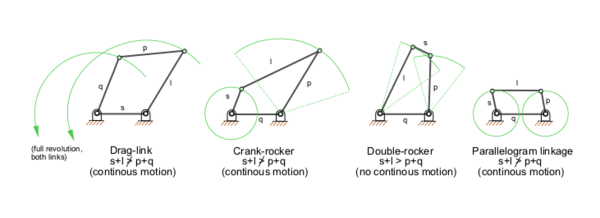Given the linkage Q2BCQ4EFH. Q2 and Q4 are fixed centers lying horizontally 6 in. apart with Q2 to left of Q4. Q2B is a crank 3 in. long and CQ4E is a lever 8 in. long pivoted at its mid point Q4, with C oscillating above the center line Q2Q4. BC is a connecting rod 7 in. long. EF is a link 8.5 in long driving a sliding block 8 and pinned to 8 at F, which moves along a horizontal line through Q2Q4 and to the right of Q4. MH and NH are links 2 in. long pinned to links EQ4 and EF, respectively, 2 in. from E. These link are pinned at H within the acute angle Q4EF. Q2B rotates counterclockwise at 30 rpm.
 Spur gears or straight-cut gears are the simplest type of gear. Sometimes, many spur gears are used at once to create very large gear reductions.They consist of a cylinder or disk, and with the teeth projecting radially, and although they are not straight-sided in form, the edge of each tooth thus is straight and aligned parallel to the axis of rotation. These gears can be meshed together correctly only if they are fitted to parallel axles.
Spur gears or straight-cut gears are the simplest type of gear. Sometimes, many spur gears are used at once to create very large gear reductions.They consist of a cylinder or disk, and with the teeth projecting radially, and although they are not straight-sided in form, the edge of each tooth thus is straight and aligned parallel to the axis of rotation. These gears can be meshed together correctly only if they are fitted to parallel axles. 






